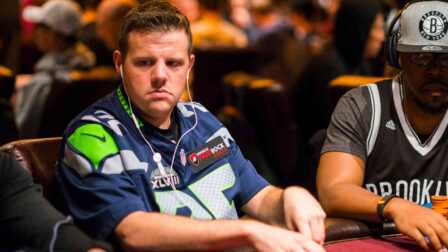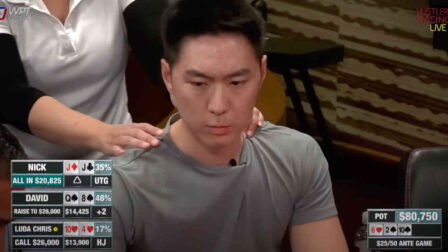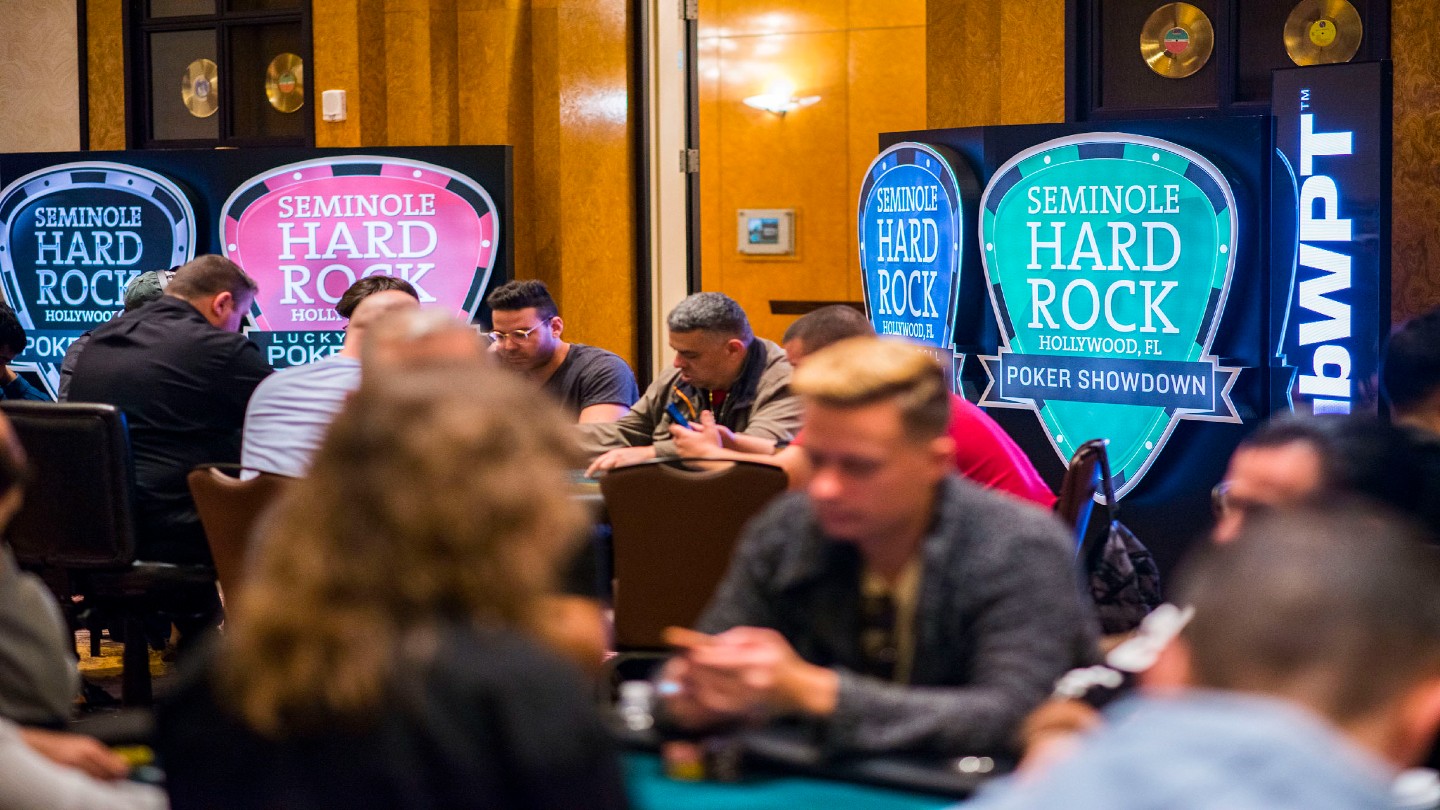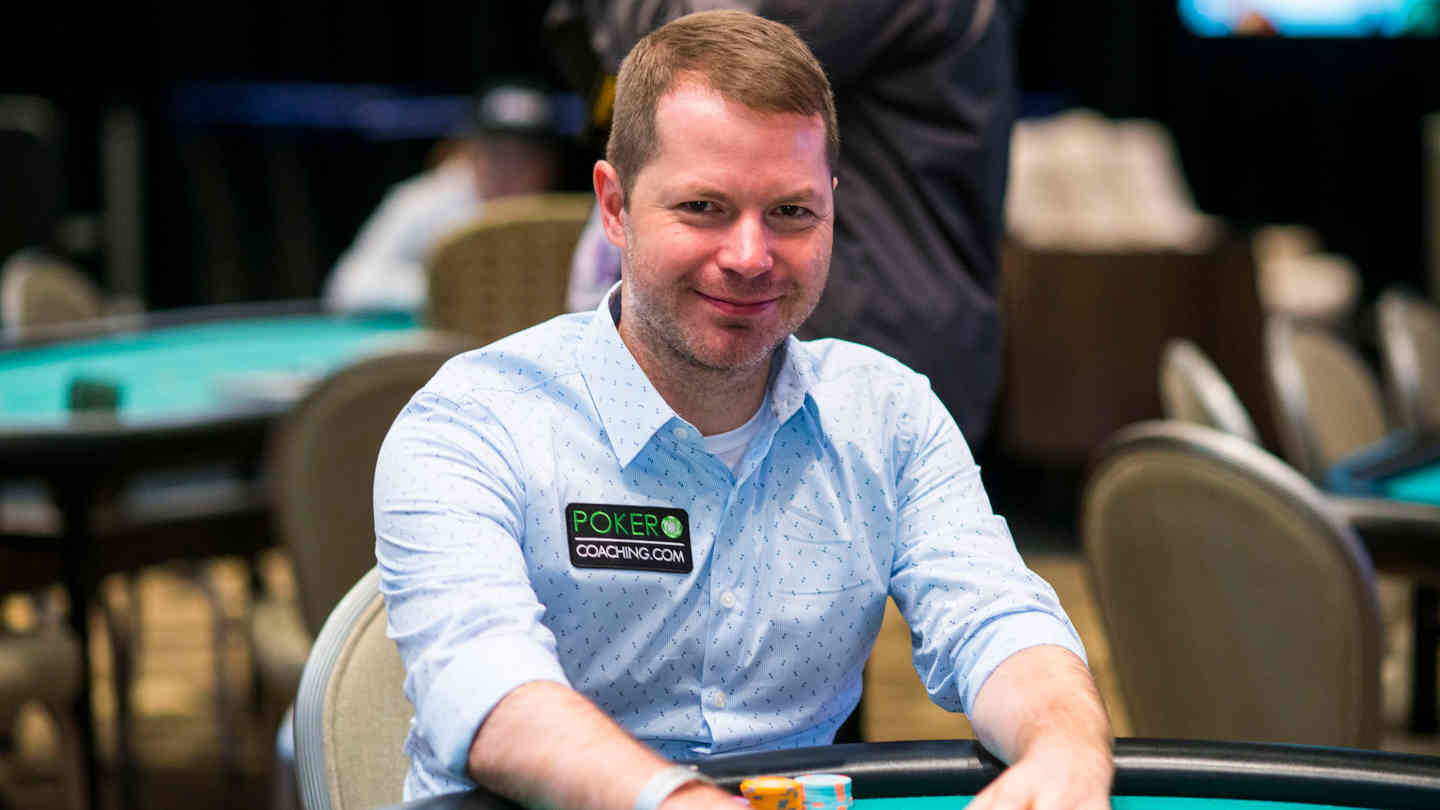Playing Profitably in Multiway Pots – Understanding Minimum Defense Frequency
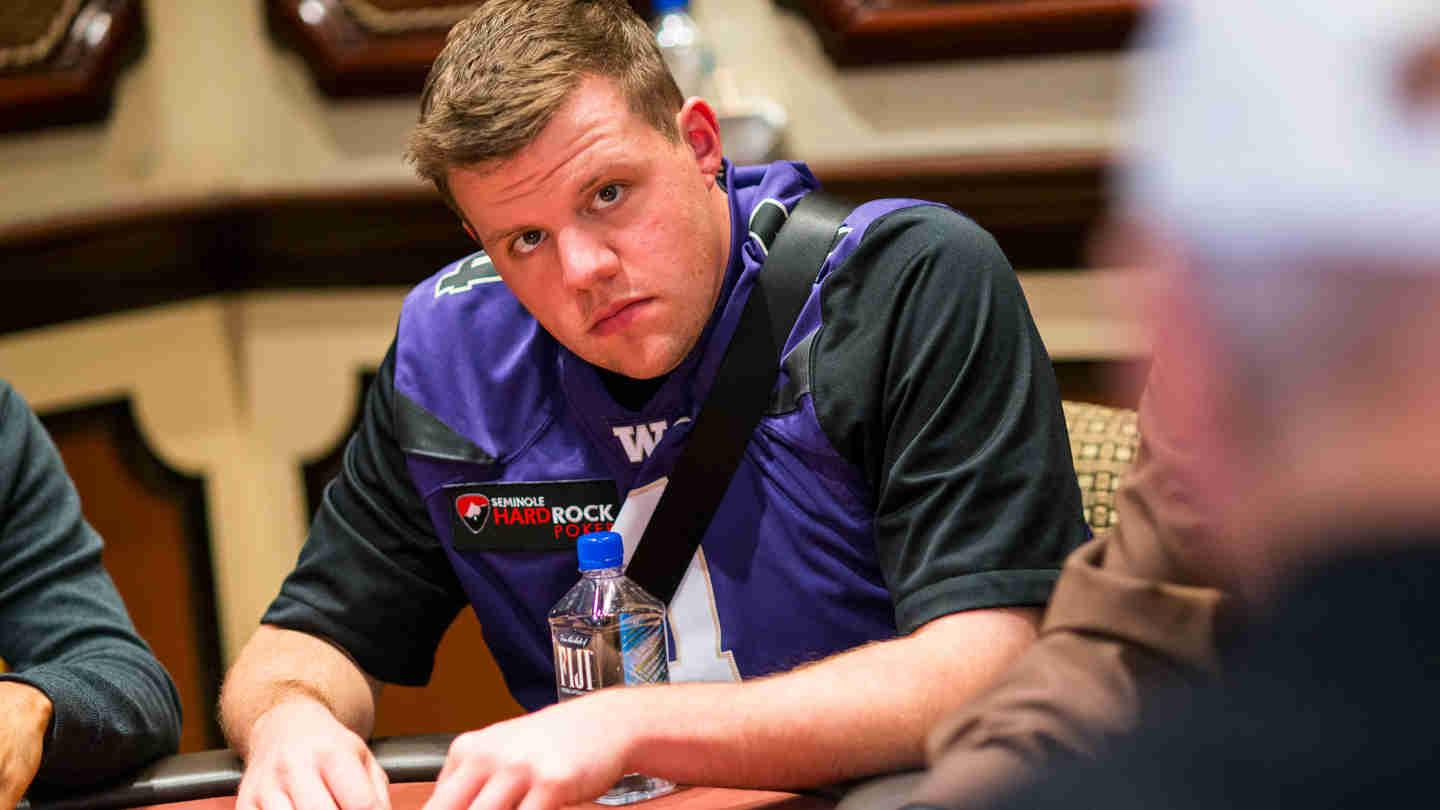
5 minutes
Last Updated: March 22, 2024
If you want to increase your edge at the tables even further, make sure to check the Pokercoaching training site.
…
In today’s article, we’ll discuss strategy and adjustments for multiway pots. This is an extensive topic that can hardly be covered in one article, so here, I’ll focus on just one aspect, and that’s the Minimum Defense Frequency (MDF).
I’ll try to cover some of the basics of multiway pot dynamics, looking at them through the lens of the MDF and how things change once the third player is introduced into the picture.
At the end of a lesson, we’ll look at an example of a hand and how it plays out in a HU and three-way scenario to try and bring some of the theoretical points home. So, let’s dive straight into it.
What’s the Minimum Defense Frequency?
Before digging deeper into the topic of multiway pots, I want to briefly go over the concept of the Minimum Defense Frequency (MDF). What does this number stand for, and how is it calculated?
In the simplest of terms, the MDF explains how often we need to continue in a hand to prevent the opponent from over-bluffing with a positive expected value. The formula to calculate this is quite simple:
- Bet / Total Pot = Fold Percentage
- MDF = 1 – Fold Percentage
So, if there is one chip in the pot and the opponent bets 1 chip, the fold percentage is 50%, and the MDF is 50%.
Implications of ignoring the MDF can be quite significant and allow the player doing the betting take advantage of the situation. If they can bet 100% of the pot on the river, knowing that the defending player will fold 55%, their bets are netting them 5% profit every time.
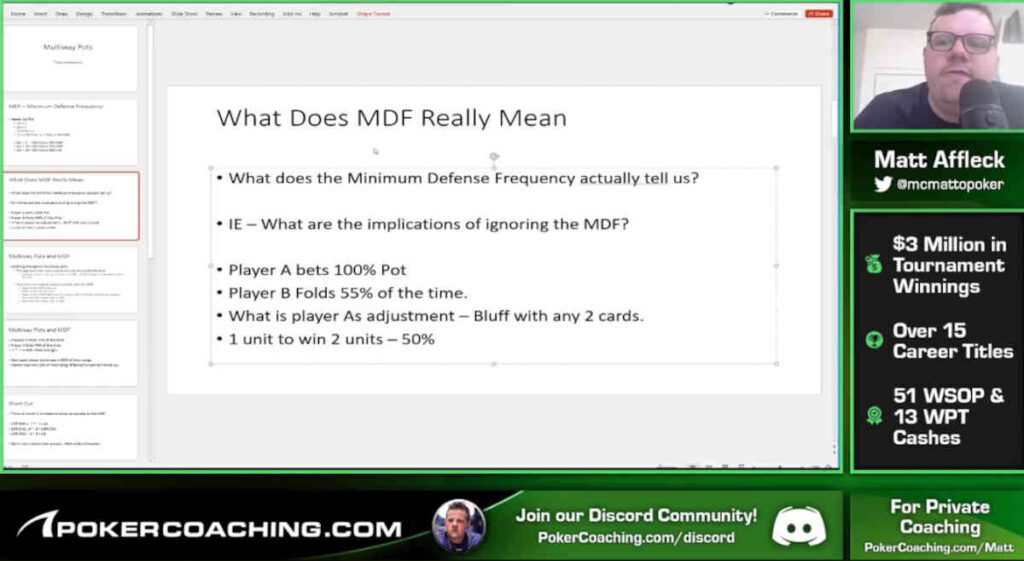
Of course, this only applies to players who understand this concept. If your opponent isn’t bluffing enough as it is, the MDF isn’t nearly as important as they’re not exploiting you.
MDF in Multiway Pots
With these few basic concepts out of the way, we can now move on to multiway pots. The formula still remains the same, but with more players in the pot, the MDF is shared by all players involved.
Going back to the earlier example, if a player bets 1 chip to win 2 chips, the remaining two players need to meet the MDF of 50% between the two of them. Otherwise, the betting player can make a profit by betting with 100% of their range.
One simple fact that doesn’t need much explaining is that people fold more often in multiway pots, and, all things being equal, both players can fold 70% and meet the MDF (0.7 * 0.7 = 49%). But this also means that players in multiway scenarios continue with about 30% of the range, as opposed to 50% in heads-up pots.
This has implications for the betting player’s decisions as well. They need a stronger value range to continue betting, and there are fewer bluffs. Since defending players are continuing with a narrower range, the bettor needs more equity to continue.
Another important fact is that the MDF will not be split equally between the players, as the player stuck in the middle will have to fold more often, as they have another player left to act to worry about.
So, facing a bet from Player A (the bettor), Player B might fold 80%, and Player C might fold around 60%, which brings us to about 48% – very close to the required MDF.
Practical Adjustments in Multiway Pots
Let’s now look at an example hand that showcases several points discussed up to this point. Before moving to the actual example, I’d like to reiterate that there are three ways to defend on flops, or three categories of hands that we’ll defend with in general:
- Board interaction – pairs, straight draws
- Suits – flush draws and backdoor flush draws
- High cards
Since we’ve already concluded that we’re folding more in multiway pots, we can use the reverse hierarchy when choosing categories of hands to continue with. High-card hands and many backdoor flush draws will go into the muck.
A Hand Example
Here’s a rather typical hand example with 40 big blinds, where the button opens and faces a call only from the big blind and gets calls from the small and the big blind. For both examples, we’ll analyze the same flop of A♦8♠2♠.
In a heads-up situation, the big blind can continue against the button’s continuation bet with a variety of hands, including KQ and KJ without a spade, almost all hands containing a Ks, a hand like JxTx, etc. If the button bets for 33% of the pot, the MDF is very high, so we need to call with a lot of hands.
Things change quite a bit when the small blind is added to the mix.
First of all, the SB will have a leading range, which forces the big blind to play very straightforward. Facing a bet that indicates strength and with another player still to act, the big blind has to fold about 80% of the time.
The reason why SB has a decent number of leads is that the big blind will continue betting into two players less than 50% of the time the action gets checked to them.
When the action does check to the button, and they bet, the small blind will be folding around 46% and the big blind around 60%, but the small blind also has around 17% of check-raises available to them.
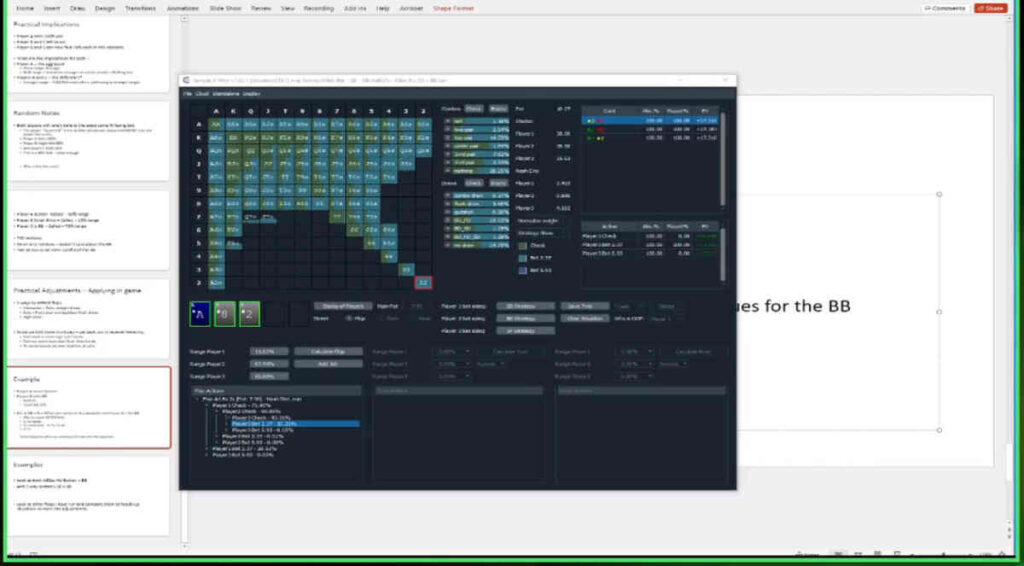
When it comes to the big blind, many hands that were a standard call in heads-up pots, like backdoor flush draws, become a clear fold. This is because the button’s continuing range is narrower (for the described reasons), so the big blind can’t profitably defend with as wide of a range.
The best way to get better at understanding these scenarios is, as always, through practice and looking at various spots using solvers. This will help you recognize certain types of situations and quickly figure out what your Medium Defense Frequency should be given the bet size, your position, and perceived ranges.















